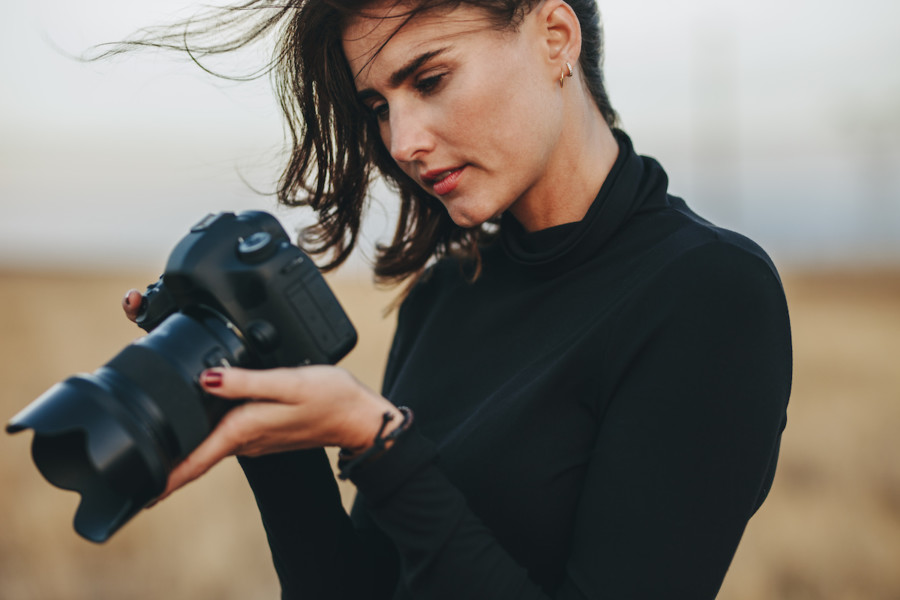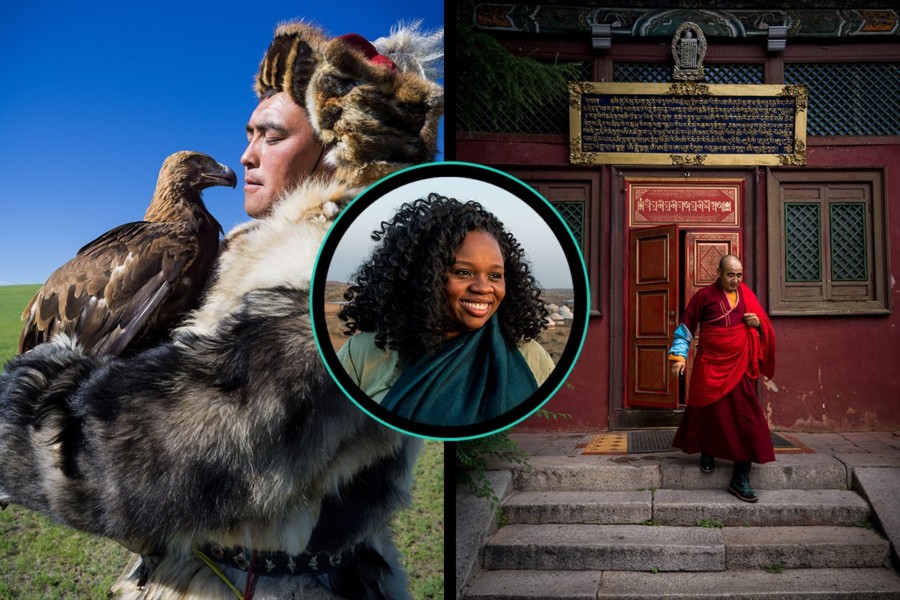Share
Why David Butow’s Image of Jeff Flake Stands Out
Both position and timing matter in capturing a compelling and visually descriptive photo. Last week’s explosive SCOTUS confirmation hearing of Br...

Both position and timing matter in capturing a compelling and visually descriptive photo. Last week’s explosive SCOTUS confirmation hearing of Brett Kavanaugh provided another interesting opportunity to explore this concept as a small group of photographers trained their cameras on the Senate Judiciary Committee members before the key vote on a motion to proceed to the full Senate.
Backroom negotiations between Jeff Flake and Chris Coons led to a dramatic scene where Flake returned to discuss his request for an FBI investigation with the panel.
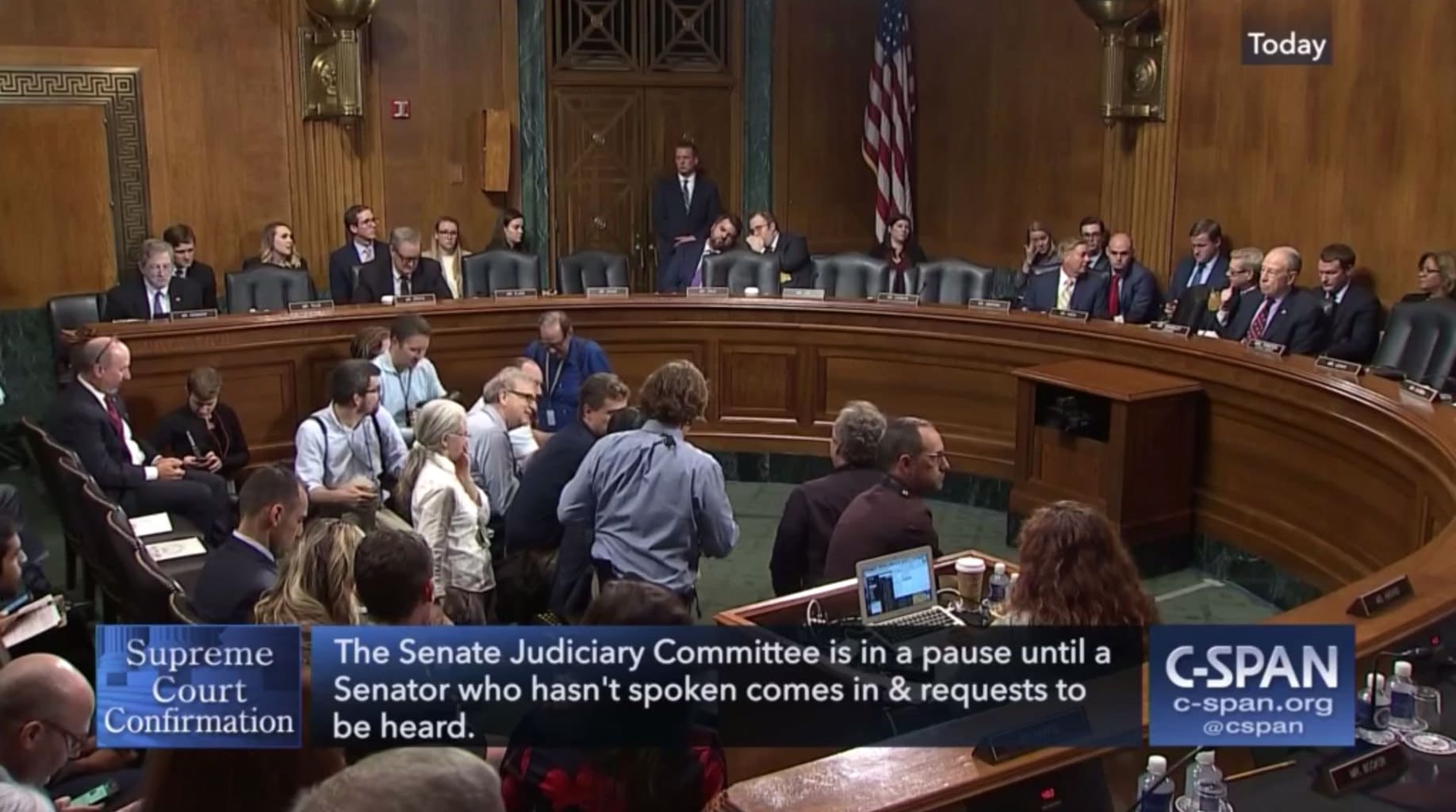
Approximately thirteen photographers were seated in the room when Chairman Grassley abruptly dismissed the meeting, and about half the photographers moved towards Flake and captured photos of him surrounded by Sens. Thom Tillis (R-NC), Mike Crapo (R-ID), Lindsey Graham (R-SC) and some staffers. What follows is an analysis of photos taken by three of those photographers.
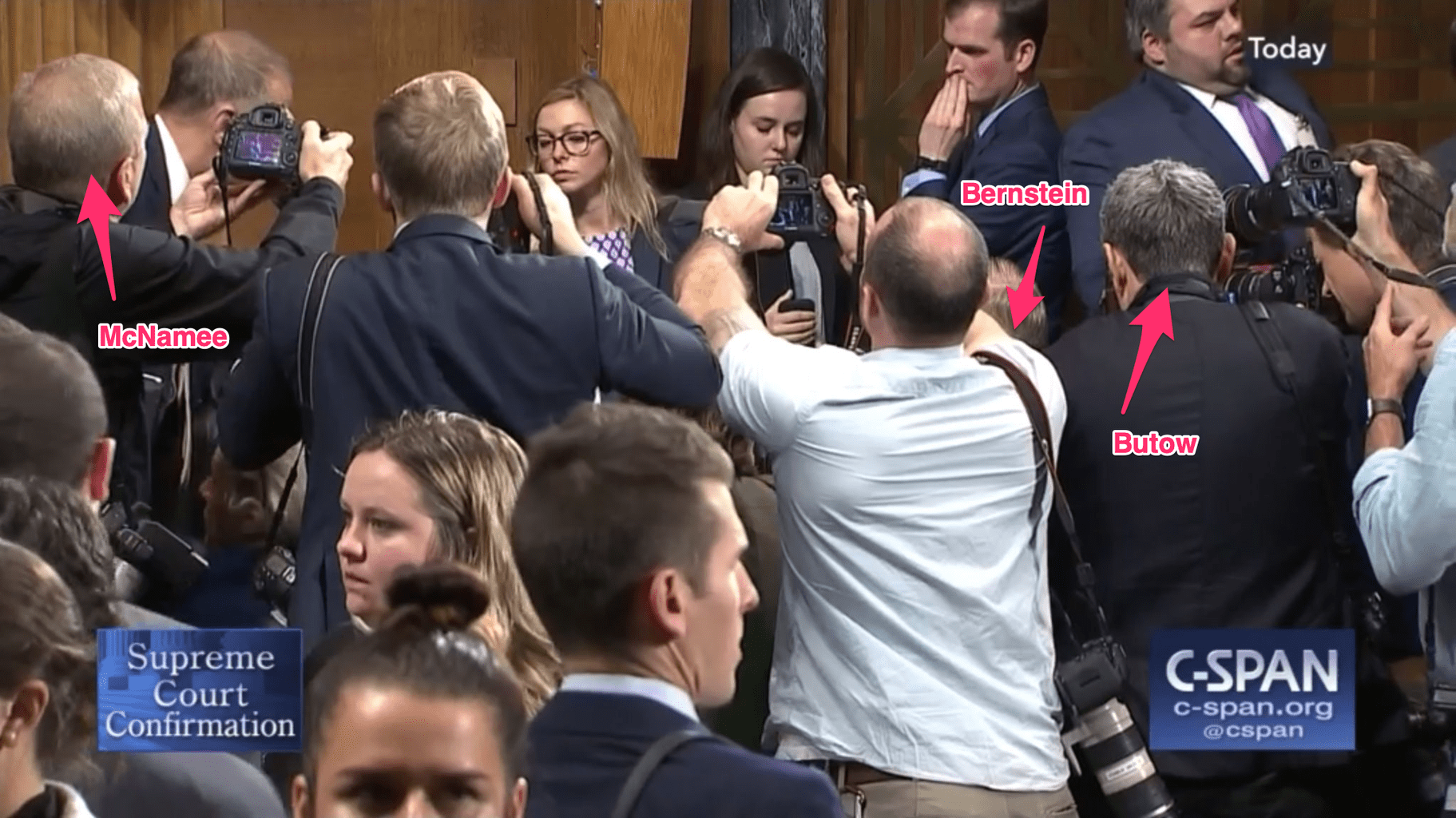
Getty Image’s Win McNamee stood tall on the left side of the tableau and captured these two images:
Embed from Getty Images Embed from Getty Images
Flake is the central subject and there’s varying levels of separation between the different layers in the scene. His focal length isn’t so wide as to distort the shoulder and arm of Crapo in the foreground.
Bloomberg’s Aaron P. Bernstein had a kneeling position in front of the dais slightly to the right of Flake giving him this perspective:
The lower vantage is more effective to me than McNamee’s image because it gives it a little more sense of intimacy. You can also see the faces of Tillis and Crapo which is an important part of the layering within the photo.
Freelancer David Butow stood slightly to the right of Bernstein. Using a slightly longer focal length compressed the scene a little more, and he composed the photo to eliminate the name plate. Butow also captured a slightly different moment than Bernstein in which Graham’s hands are raised, and everyone listens with rapt attention. His vantage gave him separation of all the faces while maintaining incredible visual layers with Graham slightly out of focus.
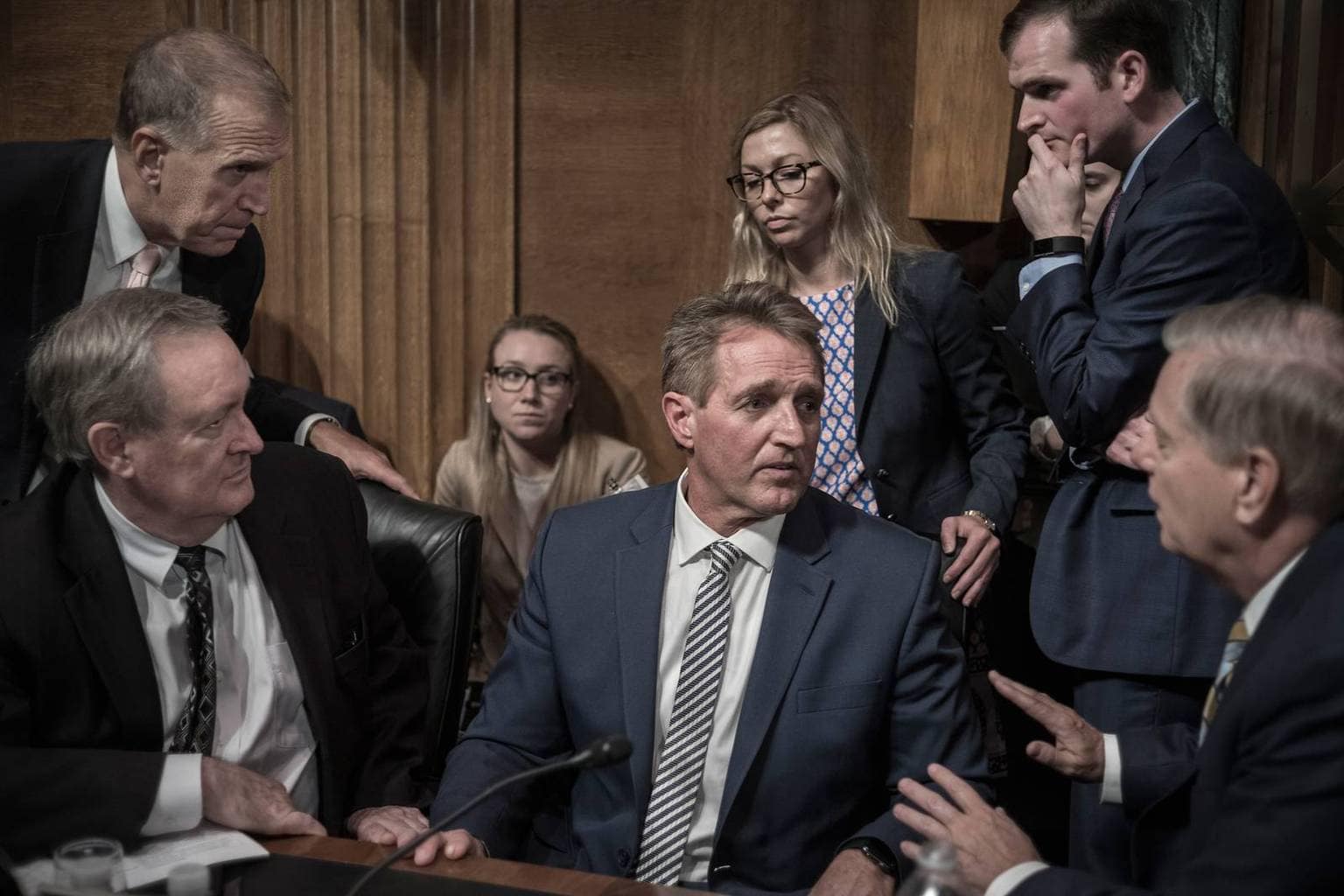
Many people have commented on the painterly-like moment because the gestures and expressions appear to be so intentional and forceful – a scene that has echoes of Carvaggio and Rembrandt.
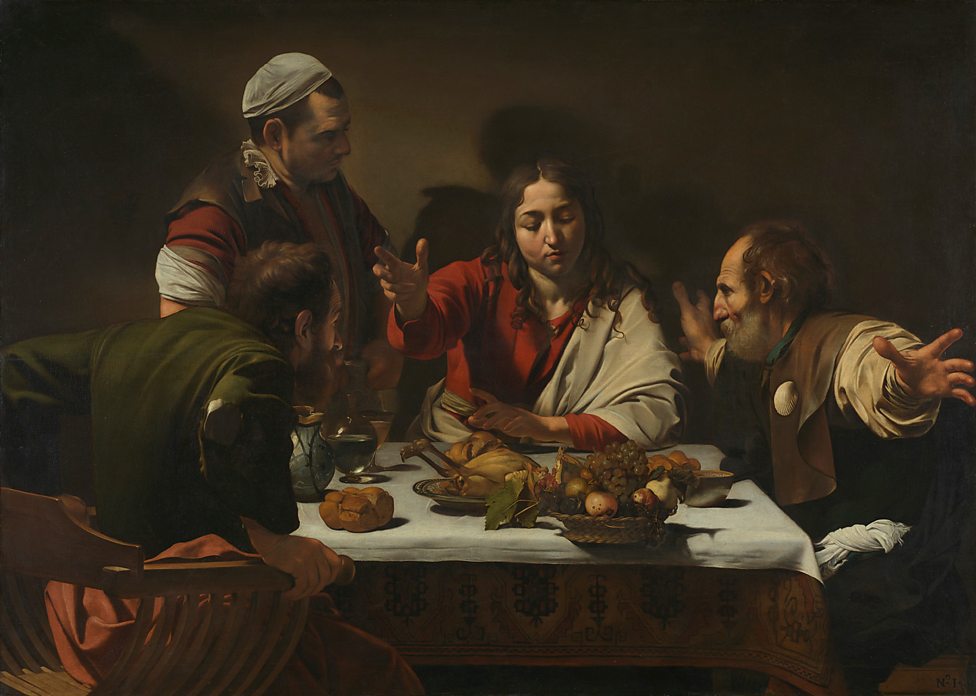
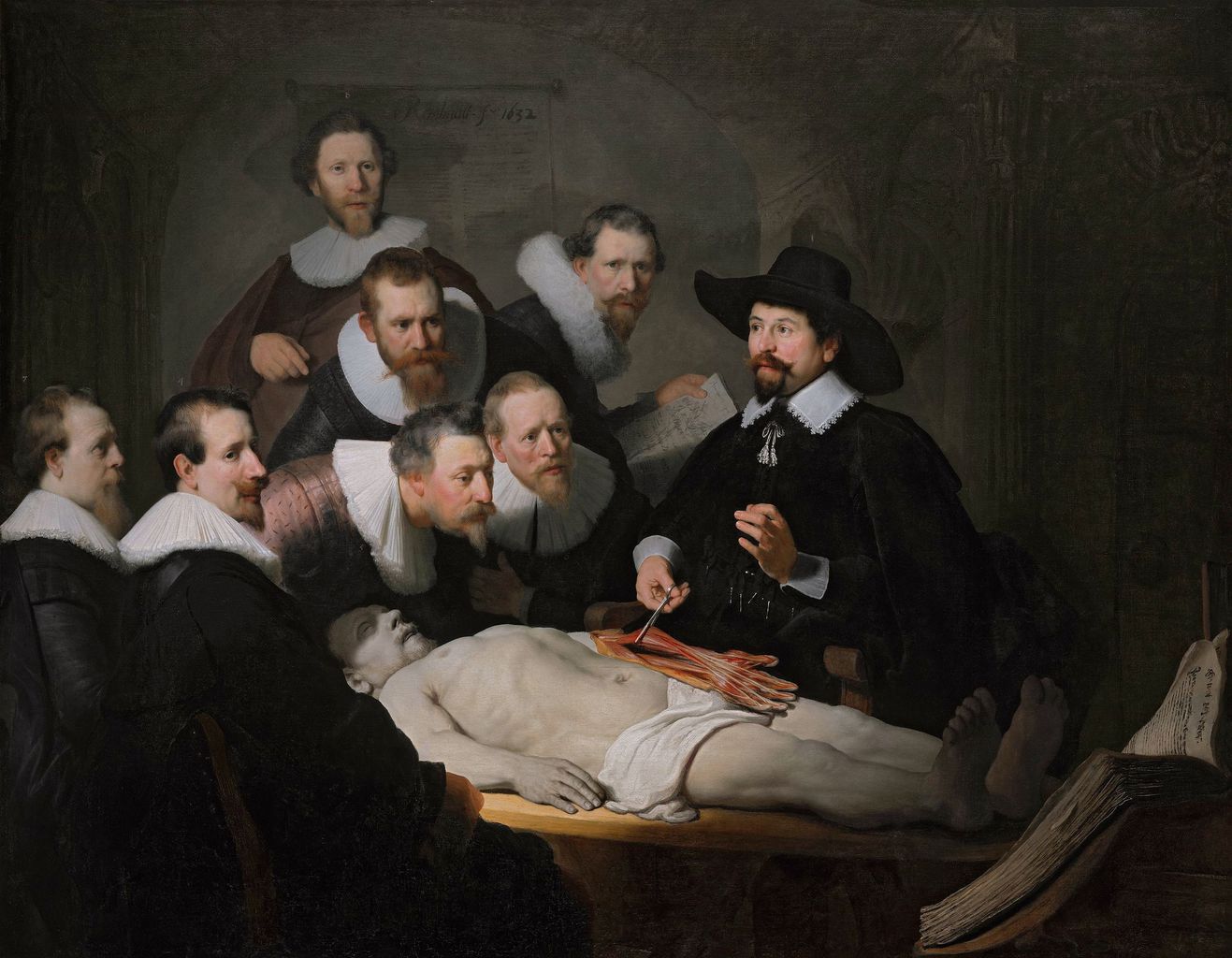
Butow’s image is also noticeably less saturated than the other photographers – which echoes the faded brilliance of a Dutch Master – even though all the images share a very similar white balance (the white of Flake’s shirt is almost completely neutral in all the images).
In an piece for TIME, Butow writes that he only took a few frames of the scene which transpired very quickly:
I don’t remember looking at the back of the camera — known as “chimping” — right away. I felt pretty confident I had something decent, and just hoped it was in focus. I went back to our work room and began to edit. I saw that the elements of the picture — the body language and expressions — had come together in a way that conveyed the situation in a way I thought was true, and fortunately were graphically well-organized and sharp. On this historic day, following another historic day, that was as much as I could ask.
For me, Butow’s image stands out in a way that the other photos don’t – An exceptional image that proves that inches and seconds matter.
